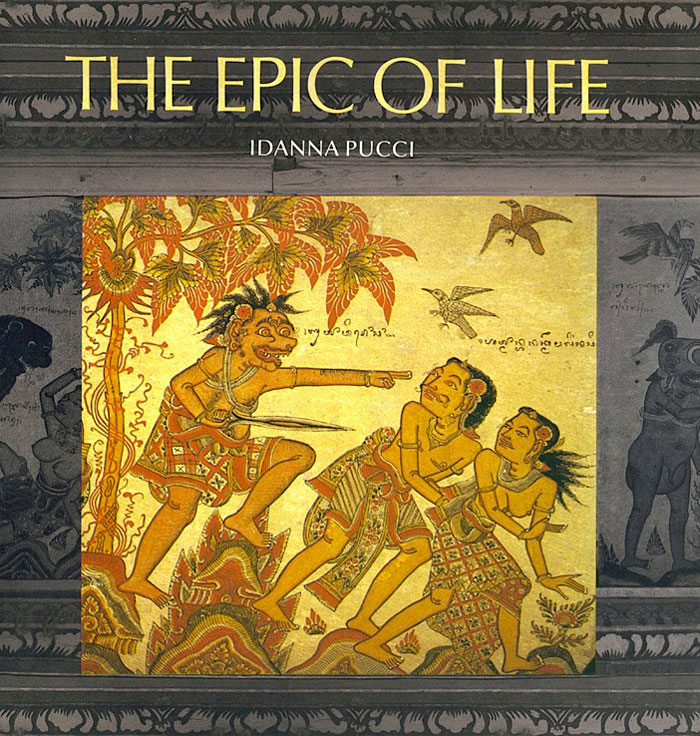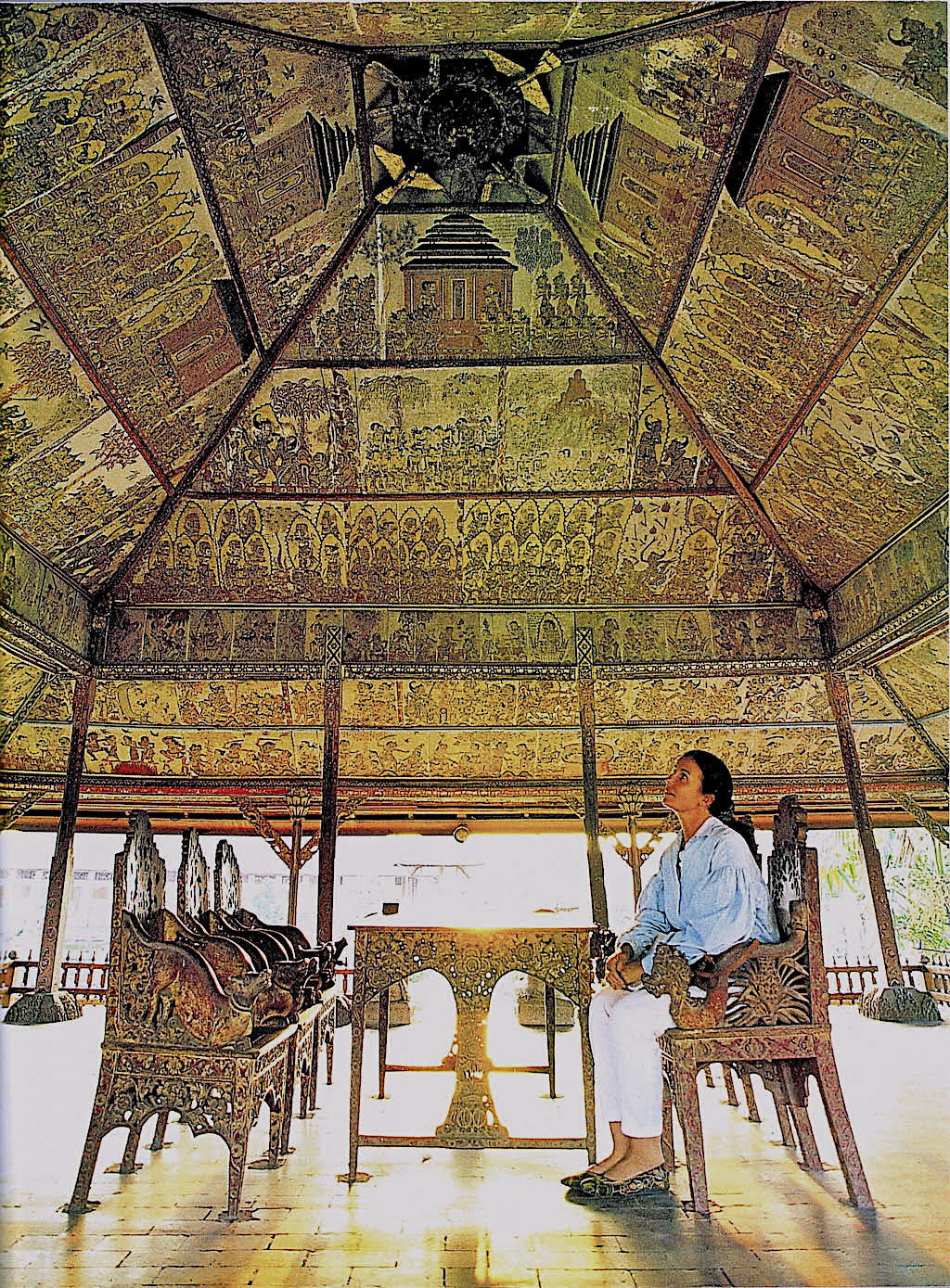This Balinese journey of the soul documents a double adventure: the hero Bhima’s epic journey to the afterlife and the author’s own exploration of his odyssey. Through a dramatic narrative filled with suspense and wonder, the reader is invited to listen as if he were part of a large Balinese audience, mesmerized by the fusion of past and present, in which the afterlife is synonymous of life itself.
This episode from the ancient Mahabharata epic unfolds on 144 painted panels that line the ceiling of the royal court of justice in Klungkung, ancient seat of the Dewa Agung or “King of Kings” on the Indonesian island of Bali.
The story fills the divide between different cultures, races, customs, religions, and languages in the name of universal principles. The subject is startling and timeless in its depiction of the human condition and the situation of the world. It addresses the same issues that continue to pervade all societies: greed, murder, theft, usury, political corruption, the dilemmas of abortion and homosexuality, and the crime against the environment. Miraculously surviving earthquakes, volcanic eruptions, and a huge fire during the Dutch invasion in 1908, this rare gem in the panoply of South-east Asian art and literature–known as the Kertha Gosa or place for justice–includes all aspects of Balinese culture under one roof. The paintings, depicting the suffering of Hell and the peace of Heaven, serve both as a legal codex and as a testament to man’s unending metaphysical journey.
Balinese arts have been illustrated in large-size books throughout our century, but never has a particular visual creation from Bali been captured than in this stunning volume.
Every inch of the ceiling of the ancient court of justice in the former royal capital of Bali is elaborately painted with scenes from a classic Indian epic. The visitor can stand and stare at it all day without understanding its intricacies. It would take a Joseph Campbell to fathom its depths. Or an Idanna Pucci to research the story of Prince Bhima, the protagonist of the “Mahabharata”, in his journey to both Hell and Heaven, and unravel a universal human message about evil and good. Pucci’s book, The Epic of Life, translates this eternally timely story into a fast-moving narrative.
The beauty of the book is enhanced by the context that the author creates to help the reader approach Balinese culture. She emphasizes the universality of the themes expressed in the epic, and her substantial introduction provides background on her unusual method of exploring the narrative ceiling paintings as well as a critical survey of the history of the ancient kingdom of Klungkung, the iconography and style of the paintings, the epic story, and the shadow theater.


